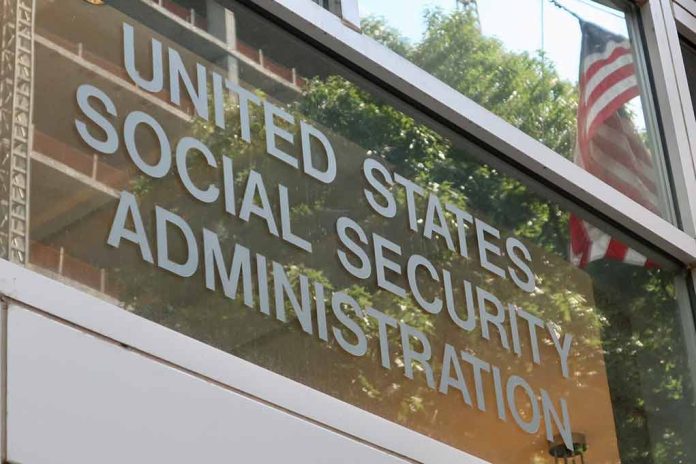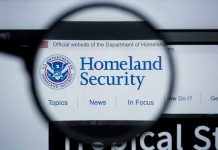
Starting April 14, 2025, millions of Social Security recipients will face a stark new reality: verify your identity in person or online, or risk losing access to crucial benefit changes.
At a Glance
- Phone-based identity verification for Social Security benefit changes will end completely on April 14, 2025
- Recipients must verify identity through their online “my Social Security” account or visit a field office in person
- Disability, Medicare, and SSI applicants are exempt from the in-person requirement
- The change aims to prevent direct deposit fraud, which diverted $33.5 million from nearly 21,000 recipients
- Create a “my Social Security” account now to avoid potential office visit delays
What’s Changing and Why
The Social Security Administration is implementing new identity verification requirements that will fundamentally change how beneficiaries interact with the agency. After April 14, 2025, anyone needing to update direct deposit information or make certain changes to their benefits must verify their identity either online through a “my Social Security” account or by visiting a local SSA office in person. This represents a complete elimination of phone-based identity verification for these services, which has been a standard option for decades.
The SSA defends this change as necessary to combat fraud. “Americans deserve to have their Social Security records protected with the utmost integrity and vigilance. For far too long, the agency has used antiquated methods for proving identity. Social Security can better protect Americans while expediting service,” said Lee Dudek, acting commissioner of Social Security. The agency points to alarming statistics: fraudsters have successfully diverted $33.5 million in benefits from 20,878 recipients by changing direct deposit information through identity theft schemes.
Social Security backtracks on some of the new ID requirements and delays the in-person office visit requirement until April 14 https://t.co/lTtFpdfTdZ
— WBAY-TV 2 (@WBAY) March 27, 2025
Who Is Affected and How to Prepare
The good news is that current beneficiaries who don’t need to make changes to their accounts will experience no immediate impact. The verification requirements primarily affect people making direct deposit changes or applying for benefits. Additionally, after considerable backlash, the SSA has exempted several vulnerable groups from the in-person requirement: individuals applying for disability benefits (SSDI), Medicare, or Supplemental Security Income (SSI) can still complete their claims over the phone if they cannot use their online account.
“In addition to extending the policy’s effective date by two weeks to ensure our employees have the training they need to help customers, Medicare, Disability, and SSI applications will be exempt from in-person identity proofing because multiple opportunities exist during the decision process to verify a person’s identity,” said Lee Dudek, acting commissioner of Social Security.
To prepare for these changes, beneficiaries should take three key steps: First, create a “my Social Security” account now before any urgent need arises. Second, gather acceptable identity documents including a primary ID (driver’s license, state ID, or passport) and potentially a secondary ID (credit card, health insurance card, or utility bill). Third, locate your nearest Social Security office and learn their hours, as wait times may increase significantly after the policy takes effect.
Criticism and Concerns
The verification changes have drawn significant criticism from advocates for seniors and people with disabilities. Critics argue the new requirements create unnecessary barriers for vulnerable populations who may struggle with transportation or technology. The timing is particularly concerning given recent announcements about potential Social Security office closures and staffing reductions, which could make in-person visits more difficult.
“While it is good that a bad policy is being postponed — and that some of the least mobile, most vulnerable groups are now exempted — it is still bad policy. There was no reason to end the validation of identity by phone, and limiting it in any way creates an unnecessary hurdle for seniors and families claiming their earned benefits,” said Max Richtman, president and CEO of the National Committee to Preserve Social Security and Medicare.
The policy implementation has already been delayed once, from March 31 to April 14, after widespread confusion and backlash. The SSA maintains it has incorporated feedback from “customers, Congress, advocates, and others” to improve service for vulnerable populations. Additionally, the agency states it will not enforce identity-proofing requirements in “extreme dire-need situations” such as terminal cases or prisoner pre-release scenarios, though the exact process for these exceptions remains unclear.
Online Verification: Your Best Option
Creating a “my Social Security” account is unquestionably the most convenient way to navigate these changes. This online portal allows you to verify your identity electronically from home, avoiding potential long waits at field offices. Setting up an account requires a valid email address, Social Security number, and either a driver’s license or state-issued ID. The verification process includes answering security questions based on your credit history and setting up multi-factor authentication for additional security.
For those uncomfortable with technology or lacking internet access, community resources may help. Many public libraries offer free computer access and staff who can assist with basic online tasks. Similarly, senior centers often provide computer classes specifically designed for older adults. Family members can also help relatives set up their accounts before any urgent need arises, potentially saving significant stress and hassle later.
Despite the challenges these changes present, preparing now will help ensure continuous access to your benefits. The SSA’s focus on fraud prevention is understandable given the millions lost to scammers, but the implementation requires careful navigation by beneficiaries who depend on these vital services.






















